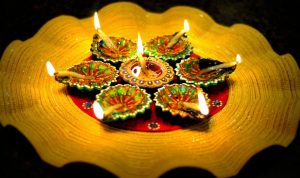A Beginner’s Guide to Morel Mushrooms

Photo: Creative Commons
April 23, 2020
What the heck is a morel mushroom?
Quite honestly, had you asked me this question a week ago, I wouldn’t have been able to give you much of a response—and I figure neither would the majority of people, as these mushrooms aren’t the most popular of subjects. Quarantine, however, has since provided me with some time to do research on these mysterious mushrooms, so here’s a quick and concise guide to everything you should know about these fun guys!
#1 – What Are Morel Mushrooms?
The Morchella, commonly known as the morel mushroom, is a genus of edible fungus. Although this particular fungus is rather polymorphic–meaning it can take on many different shapes, sizes, and colors–it is usually known to possess a black, yellow, brown, or grey tinge and a cap that resembles a honeycomb.
Because morels have such a brief growing season, however, they tend to be highly priced, selling for approximately $20 per pound, if fresh, and $120 per pound, if dry.
#2 – How Do You Hunt Them?
As previously mentioned, buying morels can be quite expensive. Luckily enough, however, you can save a few bucks by hunting them right now, as the season runs from April through June.
The real question becomes, when exactly do you find these mushrooms between the April-June window? Tenafly High School’s own expert morel mushroom hunter, Mr. Whitehead, has yet to find any himself this year. As more warm rain is expected to come our way, however, sightings should become more frequent (which you can follow at The Great Morel). To increase your own odds of finding these guys, head out to your nearest forest where you’ll likely find a few by any elm, oak, ash, or dying trees you spot. Morels tend to also favor old apple orchards, streams and creeks, south-facing hills, and burn sites. Think: moist, fertile soil.
Once you’ve gotten the location down, it’s just a matter of patiently scanning the area, particularly for recently disturbed soil.
Two cautions. First, deer ticks abound in this area. Wear light-colored clothing, tuck pants into your socks, use insect repellant, and check yourself frequently for ticks. Second, never consume a wild mushroom unless you are 100% sure that you know what it is. People die every year in New Jersey from consuming poisonous mushrooms. Luckily, morels are hard to mistake. While there is a “false morel,” they’re easily distinguished from the true morel because they aren’t hollow. But if in doubt, consult with an expert. You could also join a mycological club and learn from the pros.
#3 – Cooking with Morel Mushrooms
Before cooking, it’s extremely important that the mushrooms are properly cleansed. Brush any dirt or bugs off of them with a damp cloth, rinse with warm water, and then pat dry. Yes, bugs like to make homes in morels because they’re hollow and so make cozy apartments.
Once you’ve properly washed your morels, there are a variety of ways you can use them in your cooking. You can make soup or sauce, fry them, or simply use them as a topping on your favorite dish.
Many who have tried morel mushrooms have liked their versatility in foods but most of all, their great taste. So next time, give them a try! If you find what you think is a morel mushroom, you can consult Mr. Whitehead, who will confirm or gladly take it off your hands.















































































































































